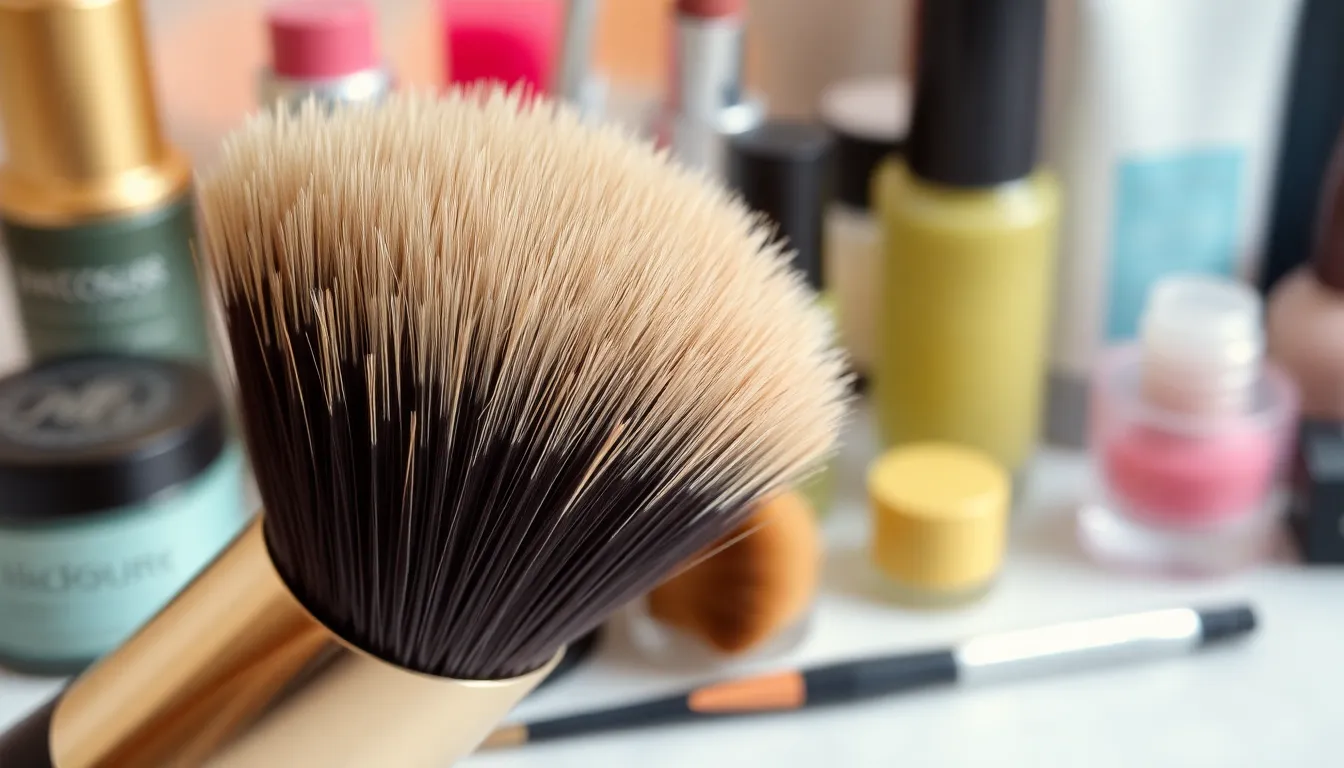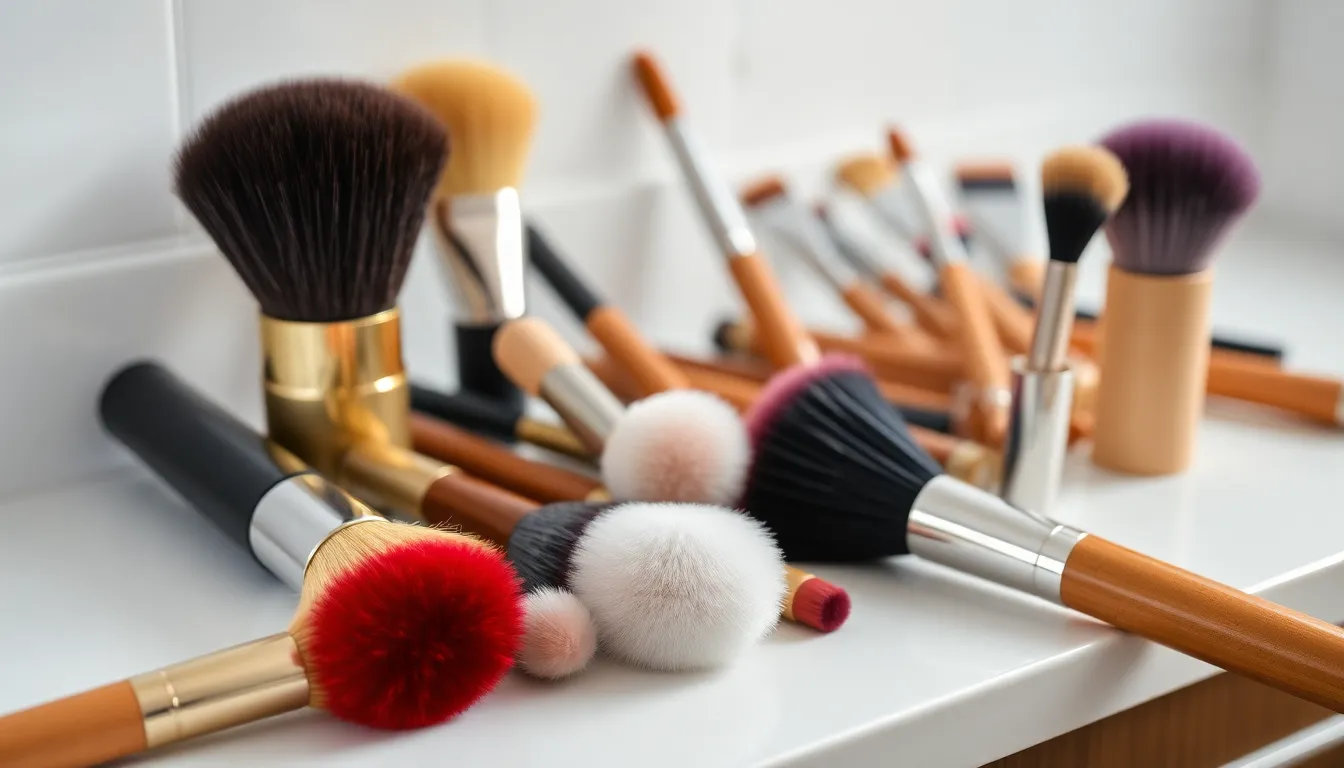Ever stared at your higossis brush and wondered what magic lies within its bristles? You’re not alone. These brushes have taken the beauty world by storm, but their composition remains a mystery to many. Spoiler alert: it’s not made from unicorn hair or fairy dust, but the materials are just as intriguing!
Table of Contents
ToggleUnderstanding Higossis Brushes
Higossis brushes are crafted from a combination of versatile materials, which contribute to their effectiveness in the beauty routine. The bristles typically consist of synthetic fibers, offering durability and softness, ideal for applying various cosmetics. Nylon is common in many brushes, providing smooth application and ease of cleaning.
Additionally, some higossis brushes incorporate natural materials like goat or sable hair. These natural hairs enhance blending abilities, allowing users to achieve a more flawless finish. Each type of bristle holds distinct properties, affecting how products adhere and blend on the skin.
The brush handles often feature wood or high-quality plastic, ensuring comfort and control during use. Wood provides a sturdy feel, while plastic offers a lightweight option. Both materials are designed with ergonomics in mind, allowing for precise movements.
Higossis brushes undergo specialized manufacturing processes, ensuring that each brush meets industry standards. Quality control checks are essential to guarantee that the brushes maintain their shape after multiple uses. The blend of synthetic and natural materials makes these brushes versatile, suitable for both novice and professional makeup artists.
A variety of shape options exist among higossis brushes, including flat, angled, and rounded styles. Each shape serves a specific function, such as contouring or highlighting, enhancing their versatility. Understanding the materials and designs behind higossis brushes helps users choose the right tools for their beauty arsenal.
Materials Used in Higossis Brushes

Higossis brushes are made from a blend of materials, showcasing their excellent quality and performance. Users can find both natural and synthetic options among these brushes.
Natural Bristles
Natural bristles come from animal hair, often sourced from goats and sable. These materials provide a soft texture that allows for smooth application. The flexibility of natural bristles enhances their ability to pick up and distribute product evenly, creating a well-blended finish. Additionally, this type of brush often offers a luxurious feel, making it a favorite among makeup artists. Brushes with natural bristles excel in blending, particularly for powder products, giving a flawless look.
Synthetic Bristles
Synthetic bristles consist primarily of nylon or polyester fibers. These materials offer durability and resilience, allowing them to maintain their shape over time. Effective at applying both cream and liquid products, synthetic brushes are versatile and suitable for various cosmetics. Many users appreciate their cruelty-free nature, as they contain no animal-derived components. Additionally, synthetic bristles often resist absorption of product, minimizing waste and promoting efficient application. Regular cleaning is also simpler with these brushes, making them a practical choice for everyday use.
Characteristics of Higossis Brushes
Higossis brushes demonstrate remarkable qualities that enhance their performance in the beauty industry. The composition of these brushes showcases both durability and flexibility, making them essential tools for makeup application.
Durability
Higossis brushes stand out for their durability, allowing frequent use without loss of quality. Synthetic fibers, primarily nylon and polyester, contribute significantly to this resilience. Products made from these materials resist wear and tear, ensuring long-lasting performance. Natural fibers like goat or sable hair also provide durability but require more care to preserve their integrity. Users can rest assured that with proper maintenance, these brushes maintain their shape and functionality over time. Consistent quality control during manufacturing processes reinforces their durability, offering reliability that beauty enthusiasts appreciate.
Flexibility
Flexibility plays a crucial role in the effectiveness of higossis brushes. The design accommodates a wide range of applications, making them suitable for various cosmetics. Synthetic bristles excel in adapting to different texture types, whether cream, liquid, or powder, allowing for seamless blending. Natural bristles enhance application techniques, providing soft and smooth finishes with effortless movement. Diverse brush shapes, including flat, angled, and rounded options, offer versatile uses. This adaptability meets the needs of both beginners and experienced makeup artists, ensuring that every user can achieve their desired look.
Applications of Higossis Brushes
Higossis brushes serve various purposes in the beauty industry. These versatile tools enhance makeup application, enabling users to achieve flawless finishes. Users rely on these brushes for both everyday makeup routines and professional use.
Primarily, makeup artists utilize higossis brushes for precise foundation application. Synthetic bristles excel at applying liquid and cream products evenly, providing a smooth base. Natural bristles, on the other hand, shine with powders, allowing for seamless blending of blush and bronzer.
These brushes also play a significant role in eye makeup application. Flat, angled brushes help define eyelids, while rounded brushes excel at blending eyeshadows for a professional look. Advanced techniques often incorporate multiple brush shapes, ensuring users attain desired results.
In addition to face and eye applications, higossis brushes cater to lip products. Users appreciate the precision offered by lip brushes, which ensure accurate color application. This attention to detail enhances the overall makeup experience.
Maintaining and cleaning higossis brushes is straightforward, reinforcing their practicality. Synthetic brushes often resist product absorption, making them easier to clean than natural fibers. Proper care can prolong their lifespan, maintaining performance over time.
Lastly, these brushes are designed for ease of use. Ergonomically shaped handles allow for comfortable grip and control, which increases user confidence during application. Whether a beginner or expert, employing higossis brushes creates a seamless makeup experience, supporting users in achieving their beauty goals effectively.
Higossis brushes stand out in the beauty industry not just for their design but also for their impressive materials. With a blend of synthetic and natural fibers these brushes offer versatility and performance that cater to various makeup applications. Their ergonomic handles ensure comfort while applying makeup making them suitable for users of all skill levels.
The careful craftsmanship and quality control behind each brush guarantee durability and reliability. As makeup enthusiasts continue to seek tools that enhance their artistry the higossis brush remains a top choice for achieving flawless results.






